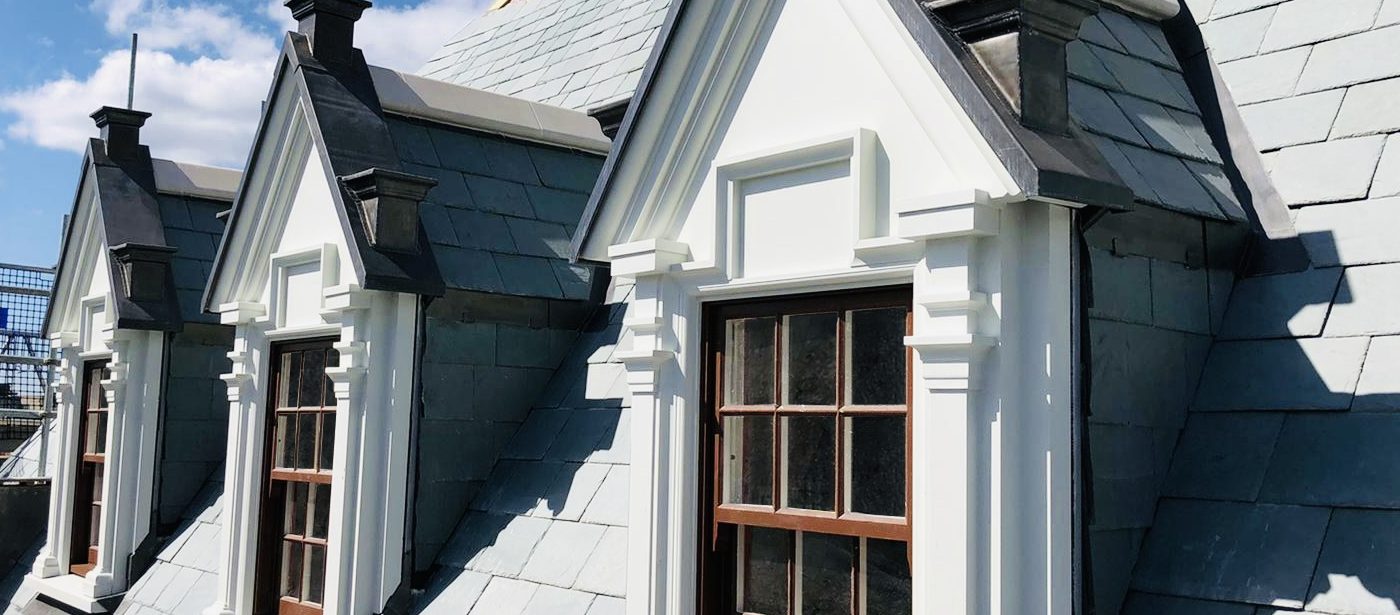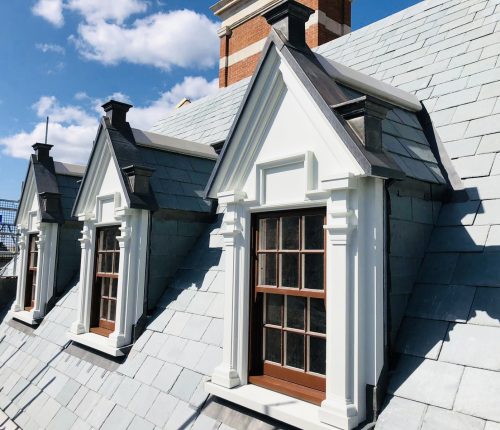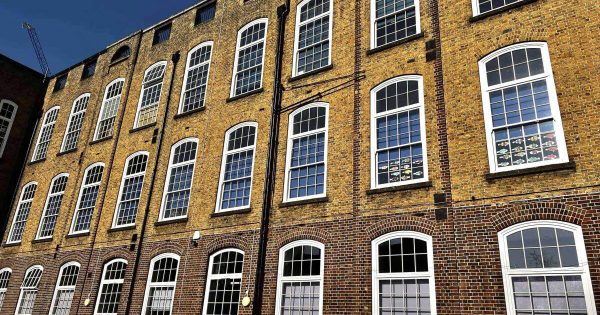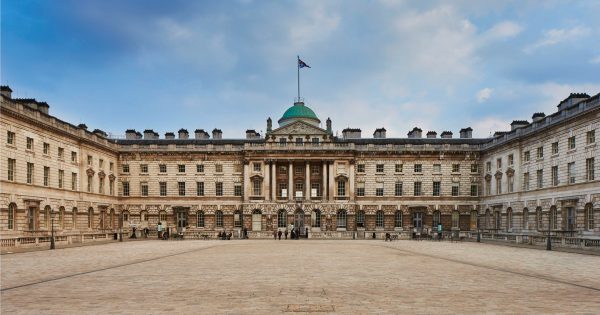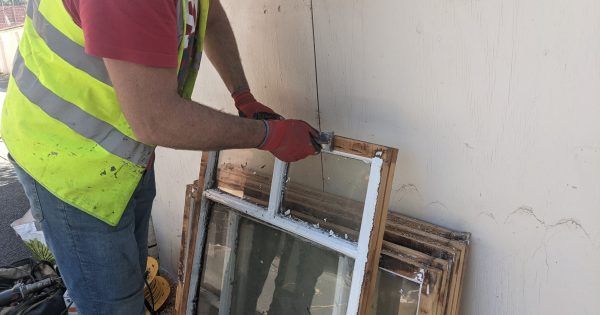Tue Oct 22
In the world of heritage restoration, balancing historical authenticity with modern energy efficiency standards is a constant challenge. For architects and specifiers working on such projects, understanding timber window U-values is crucial. These values play a pivotal role in assessing and maximising the thermal performance of windows, particularly in listed buildings and conservation areas where maintaining character is paramount.
At TRC Contracts, we’ve spent over 25 years perfecting the art of crafting bespoke timber frames that meet both aesthetic and performance requirements. In this comprehensive guide, we’ll delve into the intricacies of timber window U-values, exploring their importance, calculation methods, and how we achieve optimal thermal efficiency in our heritage sash window solutions.
Understanding U-values
What are U-values and why are they important for timber windows?
U-values measure the rate of heat transfer through a material or structure, expressed in watts per square metre Kelvin (W/m²K). For timber windows, lower U-values indicate better insulation properties, reducing heat loss and improving overall energy efficiency of buildings.
U-values are a critical metric in the building industry for several reasons:
- Energy efficiency: Lower U-values mean less heat loss, resulting in reduced energy consumption and lower heating costs.
- Compliance with building regulations: In the UK, Part L of the Building Regulations sets minimum standards for the energy performance of new and existing buildings, including specific U-value requirements for windows.
- Environmental impact: Better-insulated windows contribute to lower carbon emissions, aligning with climate change mitigation efforts.
- Comfort: Windows with low U-values help maintain consistent indoor temperatures, enhancing occupant comfort.
Calculating timber window U-values
The process of calculating U-values for timber windows involves considering several components:
- Frame material: Timber has natural insulating properties, but the type of wood (e.g., hardwood vs softwood) and its thickness affect the overall U-value.
- Glazing: The number of panes (single, double, or triple glazing), the gap between panes, and any gas fills (such as argon or krypton) significantly impact the U-value.
- Spacer bars: The material used for spacer bars between glazing panes can create thermal bridges, affecting the overall U-value.
- Seals and weatherstripping: The quality and effectiveness of window seals contribute to the overall thermal performance.
The British Standard BS EN ISO 10077-1 provides the methodology for calculating U-values for windows. This complex calculation takes into account the thermal transmittance of each component and their relative areas.
Achieving optimal U-values in heritage restorations
At TRC Contracts, we understand the unique challenges posed by heritage restorations. Our approach to maximising thermal performance while preserving historical authenticity includes:
Advanced glazing options
We offer a range of glazing solutions tailored to meet specific project requirements:
- Double glazing: Our standard double-glazed units achieve excellent U-values (Ug=1.0 -1.1W/m2K) while maintaining a traditional appearance.
- Triple glazing: For projects requiring superior thermal performance, our triple-glazed options provide exceptional insulation, achieving Ug=0.5-0.7W/m2K.
- Vacuum glazing: Our innovative vacuum glazed units offer superior thermal performance (Ug=0.4 W/m²K) with an ultra-slim 8.3mm profile, perfect for heritage projects requiring maximum energy efficiency without compromising historical authenticity.
Innovative frame design
Our timber frames are engineered to maximise thermal efficiency:
- Optimal wood selection: We use high-quality, sustainably sourced timber with excellent insulating properties.
- Multi-chamber profiles: Our frame designs incorporate multiple chambers to enhance insulation.
- Thermal breaks: Strategic use of thermal breaks within the frame reduces heat transfer.
- High-performance seals and weatherstripping: We employ advanced sealing technologies to minimise air leakage and improve overall window performance.
Customised solutions
Every heritage project is unique. We work closely with architects and specifiers to develop bespoke solutions that meet specific U-value requirements while respecting the building’s historical character.
Balancing thermal efficiency and historical authenticity
One of the greatest challenges in heritage restorations is improving energy efficiency without compromising the building’s historical integrity. Here’s how we address this:
- Subtle modernisation: We incorporate modern insulation techniques and materials in ways that are invisible from the exterior, preserving the window’s original appearance.
- Authentic glazing bars: For projects requiring the look of traditional single-glazed windows with multiple panes, we offer slimline double-glazed units with authentic-looking glazing bars.
- Colour matching: Our finishing processes ensure that any new or restored windows match the colour and texture of the original frames perfectly.
The impact of building regulations on timber window U-values
UK Building Regulations, particularly Part L, have a significant influence on window specifications in both new builds and renovations. Key points to consider:
- New dwellings: The current regulations set stringent U-value requirements for windows in new builds, typically around 1.4 W/m²K or lower.
- Existing buildings: When replacing windows in existing buildings, the new windows must either meet a minimum Window Energy Rating (WER) or achieve a U-value of 1.6 W/m²K or lower.
- Listed buildings and conservation areas: While there’s often more flexibility in these cases, improving energy efficiency is still encouraged where possible without compromising historical integrity.
- Future trends: With the UK’s commitment to reducing carbon emissions, we can expect these requirements to become more stringent over time.
At TRC Contracts, we stay ahead of regulatory changes, ensuring our windows not only meet but often exceed current standards.
The role of U-values in reducing energy costs and carbon emissions
Investing in windows with low U-values can have a significant impact on both energy bills and environmental footprint:
- Energy savings: High-performance windows can substantially reduce heating (and cooling) costs over the lifetime of the building.
- Carbon reduction: By minimising heat loss, efficient window frames contribute to lower overall energy consumption and reduced carbon emissions.
- Comfort improvements: Better insulated windows help maintain more stable indoor temperatures, reducing cold draughts and condensation issues.
- Long-term value: While the initial investment may be higher, the long-term energy savings and improved comfort add value to the property.
Why choose TRC Contracts for your heritage window projects?
With over 25 years of experience in crafting bespoke timber windows for heritage restorations, TRC Contracts offers:
- Expertise: Our team understands the complexities of balancing thermal performance with historical authenticity.
- Quality: We use only the finest materials and most advanced manufacturing techniques to ensure superior performance and longevity.
- Compliance: Our windows are designed to meet and often exceed current building regulations.
- Customisation: We offer bespoke solutions tailored to the specific needs of each unique heritage project.
- Support: From initial consultation through to installation and aftercare, we provide comprehensive support throughout your project.
Crafting energy-efficient heritage: The TRC Contracts advantage
Understanding and optimising timber window U-values is crucial for successful heritage restorations that meet modern energy efficiency standards. By combining traditional craftsmanship with cutting-edge technology, it’s possible to achieve exceptional thermal performance without compromising historical integrity.
At TRC Contracts, we’re passionate about helping architects and specifiers navigate these challenges. Our expertise in creating bespoke timber windows with optimised U-values ensures that your heritage restoration projects not only preserve the past but are also fit for the future.
Ready to maximise the thermal performance of your heritage restoration project? Contact TRC Contracts today. Let’s work together to create windows that honour history while embracing energy efficiency.
Visit our profile on NBS Source
As a trusted and reputable supplier, TRC Contracts is proud to be a member of NBS Source. Our profile on NBS Source provides architects with easy access to detailed information about our products and services, making it even more convenient for you to explore the range of wooden sash windows we offer.
Visit our profile on NBS Source today to learn more about how TRC Contracts can meet your project requirements and deliver exceptional results.
Discover more with TRC Contracts
Choosing the right window style for your architectural design
Advancements in window restoration techniques
The benefits of triple glazed sash windows in historic buildings

